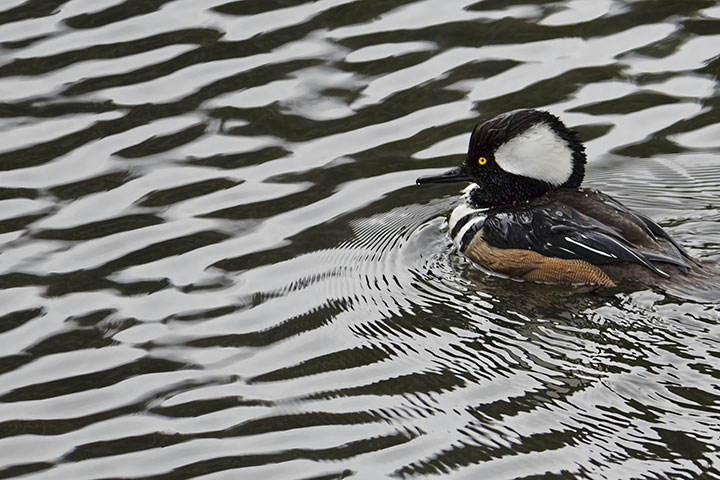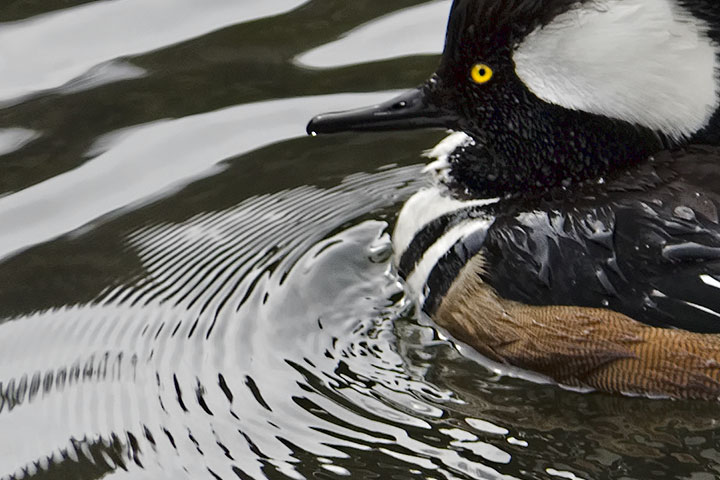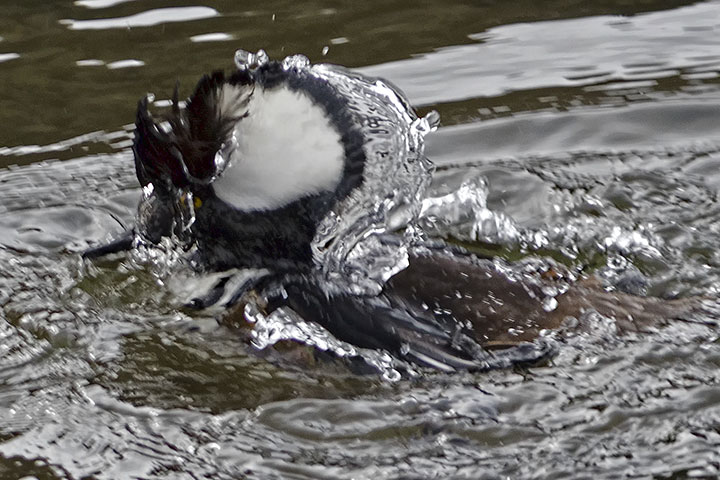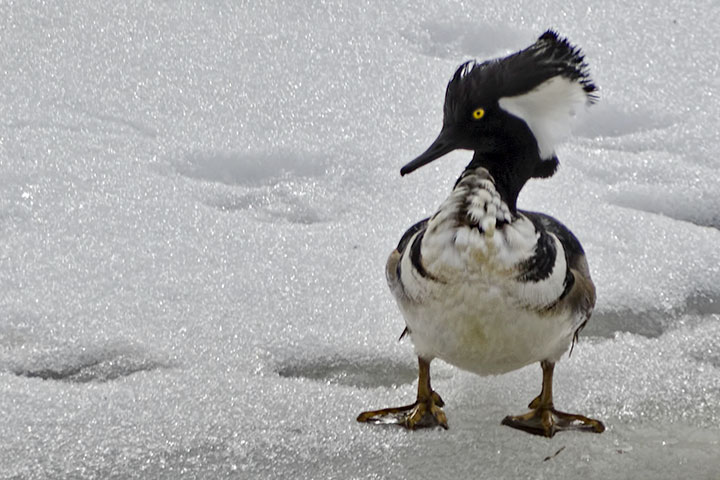A Hooded Merganser plied zebrine waters.
The astute observer might guess that this posting was made solely so I could use the word zebrine. After all, I am guilty of taking as much pleasure from interesting words as from interesting images. Indeed, as I responded to one correspondent who commented upon my choice of language: “fun with pictures; fun with words.”

The picture holds more delights for me than just the patterns of reflection. Those zebra-like waves depend upon gravity as a restoring force, while the hoodie’s bow ripples depend upon surface tension. One can tell the difference between waves and ripples merely by watching the behaviour of each.
The dividing line between waves and ripples is a length of 1.7 cm. When the crest-to-crest distance, or wavelength, is greater than 1.7 cm, the primary restoring force of disturbed water is gravity (rather like a pendulum) and the undulations are called waves. When the crest-to-crest distance, or wavelength, is less than 1.7 cm, the primary restoring force of disturbed water is surface tension (rather like a trampoline) and the undulations are called ripples (also called capillary waves).
There is an interesting difference in the behaviour of waves and ripples. With a wave, the greater the wavelength the faster it moves. So, a wave with a one-meter wavelength travels faster than one with a ten-centimetre wavelength. However with a ripple it is the other way around: the shorter the wavelength the faster it moves. So a ripple with a one-millimetre wavelength travels faster than one with a one-centimeter wavelength.
There is a detail of the picture below. The duck disturbs the water ahead of it, but the disturbances that have travelled farthest ahead have a narrower spacing than those nearby. These are ripples where the shortest wavelengths have travelled out from the duck both fastest and farthest. Although gravity is the restoring force for those broader (zebrine) waves, surface tension is the restoring force for the tiny ones ahead of the hoodie.

Offering even more water fun, the Hooded Merganser then splashed.

And soon climbed onto some shore ice and presented a rather impudent stance.


Ah, Alistair, these are the best photos yet, bringing a tear to the eye of a retired physics teacher.
The top photo shows clearly a constructive and destructive interference pattern, where crest and troughs cancel each other, etc. The second photo illustrates the Doppler effect, with the leading wavelength in front of the duck being shorter. Were these sound waves, an advancing object (car or train) would sound higher in pitch than a recending one.
Now lets forget that and just enjoy the beauty and wonder of life as exibited in these fine photos. Thanks, Carol
ps. Zebrine should describe some exotic dessert, no?
Carol, I had no idea that there might be a physics teacher lurking in these woods. You are right about the interference patterns that are visible. I didn’t mention it in the posting as I thought I was pushing my luck merely to discuss the ripples. Yet, I disagree that the pattern off the duck’s bow shows the Doppler effect. The difference in the wavelengths is a consequence of the speed dependance on wavelength for waves that rely upon suface tension. For this to show the Doppler effect, all could have the same wavelength, but would be perceived differently depending upon the motion of either the observer or the source. This is easily experienced when in a boat on water. If the boat is travelling against the waves, the frequency of encounter is high; when with the waves, it is low.
As to the zebrine dessert, how about chocolate-swirl ice cream served with date-roll cookies?
love your photos! love hoodies. love your comments
And I thought this was going to be about zebra mussels!
Ineluctable miracles of beauty. That the physical laws, complex, precise, birth such beauty unplotted. .Luscious.